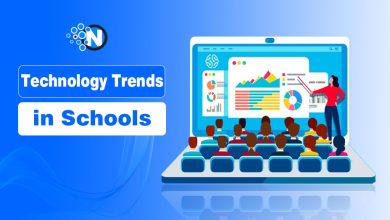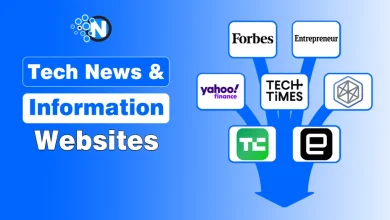8 Sustainable Tech Innovations in 2025

In an era defined by environmental challenges, the emergence of Sustainable Tech Innovations stands as a beacon of hope. This revolutionary field marries cutting-edge technology with a profound commitment for environmental preservation and social responsibility.
From renewable energy breakthroughs to eco-friendly materials and circular economy solutions, Sustainable Tech Innovations are driving a transformative shift towards a greener, more sustainable future. Sustainable technology can alter industries, alleviate climate change, and balance human progress and environmental well-being.
1. Solar Skin for Urban Infrastructure
As urbanization continues to rise, integrating renewable energy into urban landscapes becomes crucial. Enter solar skin technology – a revolutionary concept that transforms conventional building materials – such as windows, facades, and sidewalks into solar panels.
This innovation seamlessly integrates solar cells into surfaces like windows, sidewalks, and even facades of buildings. Not only does this enhance energy generation, but it also turns everyday infrastructure into sustainable powerhouses, reducing the reliance on fossil fuels and lowering carbon emissions.
Solar skin technology integrates silicon cells in architectural materials to create discreet solar panels. Flexible and lightweight, these rooftop solar panels can be neatly fitted into windows, buildings, and walkways. This integration preserves the structures’ beauty and generates renewable energy in underused sections.
Example of Solar Skin Applications:
Imagine skyscrapers with windows that not only allow natural light but also capture sunlight to generate energy. Solar skin technology enables windows to serve as energy producers without obstructing the view. These windows can power internal systems, reducing the building’s overall energy consumption.
2. AI-Driven Energy Optimization
Artificial Intelligence (AI) is taking energy efficiency to unprecedented heights. AI will be much more integrated with DERs such local solar panels and battery systems by 2025 to optimize energy distribution and consumption. A responsive and resilient energy grid uses real-time data analytics to predict demand, balance supply, and detect system faults.
As a result, energy-intensive processes become more streamlined, significantly decreasing our carbon footprint. In 2025, AI is making significant strides in transforming the energy landscape, for more efficient and sustainable energy solutions.
Example of AI-Driven Energy Optimization:
AI is making electricity systems smarter and more responsive. Sensors, smart meters, and other sources monitor energy demand and supply in real-time in these networks.
AI algorithms analyze this data to predict consumption patterns and adjust energy distribution accordingly. This leads to optimized energy flow, reduced waste, and improved grid stability.
3. Ocean-Friendly Tech Innovations
Our oceans are facing unprecedented challenges from pollution and climate change. In response, sustainable tech innovations are emerging to protect marine ecosystems. Innovations like autonomous trash collectors and AI-driven marine monitoring systems are actively removing plastic waste from oceans and safeguarding marine life.
These technologies not only address immediate concerns but also contribute to the long-term health of our planet’s aquatic environments.
Example of Ocean-Friendly Tech Innovations:
Autonomous drones equipped with sensors and collection mechanisms are being deployed to detect and remove marine debris. These drones can navigate oceans, rivers, and coastal areas to locate and retrieve plastic waste. It is also helping to reduce the impact of pollution on marine life.
4. Plant-Based Tech and Lab-Grown Meat
The food industry is undergoing a sustainable transformation with the advent of plant-based technology and lab-grown meat. These innovations address the environmental impact of traditional livestock farming by offering more eco-friendly alternatives. More and more people will be turning to precision fermentation in 2025 for their cell-based seafood and lab-grown dairy needs. This will provide them with more sustainable options.
Satisfying both palates and consciences, plant-based foods are rapidly becoming indistinguishable from those made from animals. Concurrently, compared to conventional meat production, which requires a lot of area, lab-grown meat uses far less land and produces far less greenhouse gas.
Examples of Plant-Based Technology and Lab-Grown Meat:
Plant-based technology has revolutionized dairy alternatives, offering a range of products like almond milk, oat milk, and cashew cheese. These options provide individuals with lactose intolerance or ethical concerns with an alternative with a significantly lower environmental impact than traditional dairy production.
5. Carbon Capture and Utilization
Resolving the global carbon emissions challenge demands the implementation of inventive approaches. By 2025, direct air capture (DAC) technology is expected to see substantial growth. It removes CO₂ directly from the air and uses it in construction, biofuels, and consumer products. CO₂ emissions will soon be seen as an economic benefit rather than a liability at DAC facilities, especially those that use renewable energy.
Example of Carbon Capture and Utilization:
Carbon mineralization reacts carbon dioxide with minerals to form stable compounds. This prevents CO2 from reentering the atmosphere. The addition of stable chemicals to concrete may boost its strength and durability.
6. Next-Gen Recycling Systems
Conventional recycling methods often fall short of effectively managing the mounting e-waste and plastic waste challenges. Recycling centers can sort materials more precisely with the help of AI and robots, and improved chemical recycling can break down complicated materials into reusable components. It is expected that these systems will allow for more extensive recycling applications by 2025, drastically decreasing the need for landfills.
Also, new developments in chemical recycling are facilitating the disassembly of complicated materials into their component parts, which opens up more material for recycling and eases the load on landfills.
Example of Next-Gen Recycling Systems Tech Innovations:
Artificial intelligence is used to analyze waste streams and optimize the sorting process. AI and ML algorithms can identify different types of materials, even those with complex compositions, enabling more accurate separation and increased recycling rates.
7. Green Blockchain Applications
New sustainability applications are possible by the openness and security of blockchain technology. Green blockchain projects verify the veracity of environmental claims by validating sustainable practices, such as ethical sourcing and carbon offset tracking.
Regulatory frameworks for blockchain-tracked carbon credits are anticipated to be established by 2025 by both government and industry standards, with the aim of holding firms responsible.
Example of Green Blockchain Applications:
Blockchain verifies carbon credits and offsets to ensure the accuracy and legitimacy of claims. This helps companies and individuals invest in projects that truly contribute to carbon reduction, thereby addressing climate change.
8. Transparent Fashion Supply Chains
The fashion industry is notorious for its environmental and ethical challenges. In 2025, shoppers will most likely use data collected in real-time from the supply chain to follow the journey of their clothing from the point of origin all the way to completion. Customers are better able to make ethical purchases when this much information is readily available to them. This in turn motivates companies to become greener.
Example of Transparent Fashion Supply Chain Tech Innovation:
As items move through the supply chain, IoT-enabled tags follow them. Informed, environmentally conscious purchasing is encouraged since customers can utilize their smartphones to get information about production sites, conditions, and environmental implications.
Final Words
The year 2025 is witnessing an impressive array of sustainable tech innovations that hold the promise of transforming industries and mitigating pressing environmental concerns. These technologies are transforming our world for the better, from solar-integrated infrastructure to transparent supply chains.
A more sustainable future, one in which technological advancement and ecological balance are not mutually exclusive, is within our reach as we embrace these advancements. In order to leave a sustainable and rich world to the generations to come, it is imperative that individuals, corporations, and governments work together to accept and promote these technologies.




